The Dwarf Hamster Lifespan: Key Facts and Care Tips
Understanding a dwarf hamster’s lifespan is key to providing the best care. While these small pets typically live 1.5 to 2 years, their longevity is directly shaped by genetics, diet, and environment. This guide details the lifespan of different dwarf hamster species and provides evidence-based care tips to help your pet thrive.
This guide provides the information and viewpoint you need to establish a solid and enduring bond with your adorable mice.
Standard Information of Different Dwarf Hamster Types
Adorable dwarf hamsters can offer their owners happiness and company. It is critical to comprehend dwarf hamster lifetime averages and the variables that may impact them. The average hamster lifespan in captivity is 2 to 3 years. However, this can vary based on several factors, including genetics, nutrition, and activity.
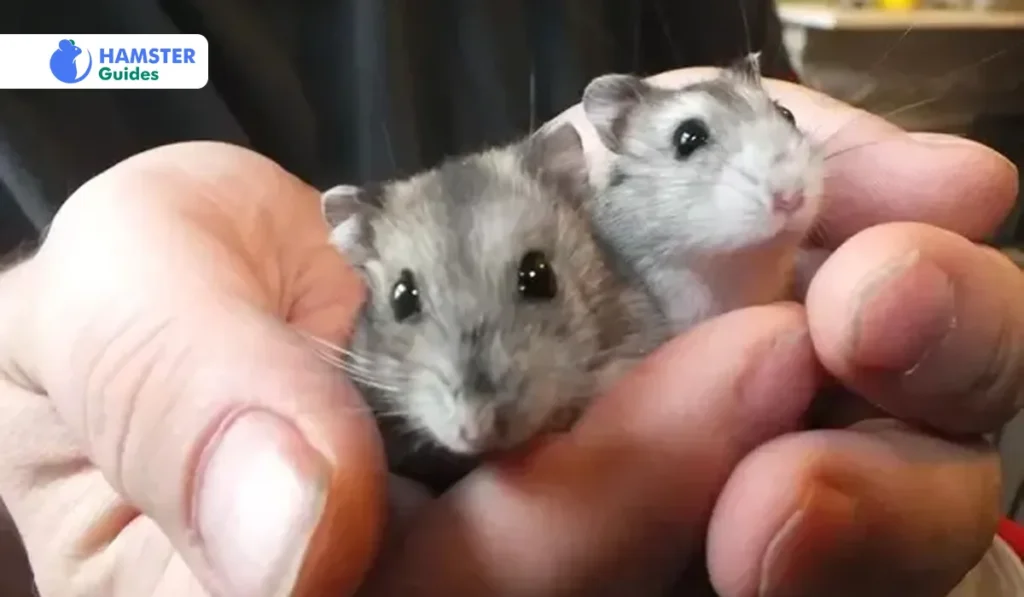
The longevity of a dwarf hamster is also influenced by its breed. Syrian dwarf hamsters live longer than Roborovski or Campbell’s dwarf hamsters. Campbell’s and Roborovski’s dwarfs often survive for up to three years.
Pet owners must be aware of these lifespans when choosing whether or not to get a pet with such a short life expectancy. It is equally imperative that their animal companions receive the appropriate care so that they can live out their entire potential lifespan.
| Hamster Species Name | Scientific Names | Size | Colour | Life Cycle | Origin |
| Roborovski Dwarf Hamster | Phodopus Roborovskii | 5cm | Sand, Light Brown, And Grey | 3-4 Years | Russia, Kazakhstan, and Northern China |
| Syrian Dwarf Hamster | Mesocricetus Auratus | 18 Cm | Large Variety | 2 Years | Syria |
| Winter White Hamster | Phodupus Sungorus | 10 Cm | Sapphire, Pearl, Grey | 1.5-2 Years | China, Kazakhstan, and Mongolia |
| Campbell’s Dwarf Hamster | Phodupus Campbell | 10 Cm | Grey, Bron, Cream | 1.5-2 Years | Mongolia, Russia |
Russian Dwarf Hamster Lifespan
Russian dwarf hamsters are popular small companions because of their cute looks and active lifestyle. With a one-and-a-half to three-year life expectancy, these small animals make excellent companions. Explore the factors that influence these adorable animals’ longevity and discover how to provide them with a long and happy life.
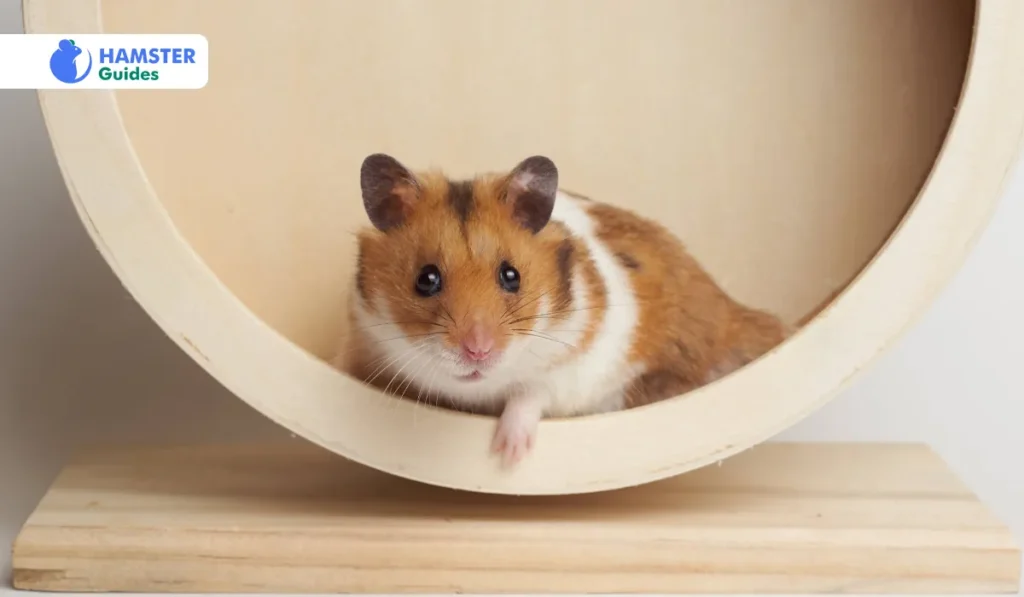
Russian dwarf hamsters usually live for 1 to 3 years. Giving them the proper care, such as a well-balanced diet, regular veterinary visits, and a clean cage, can extend their life. Establishing a cozy atmosphere is essential for their well-being. Let us examine the factors that affect the Russian dwarf hamster’s lifespan.
Read More: Winter White Hamsters: A Complete Guide
Campbell’s Dwarf Hamster Lifespan
One of the most popular species of dwarf hamsters kept as pets is the Campbell’s dwarf. These little guys can survive up to three years if given the proper care and attention, but their typical lifespan is only two years.
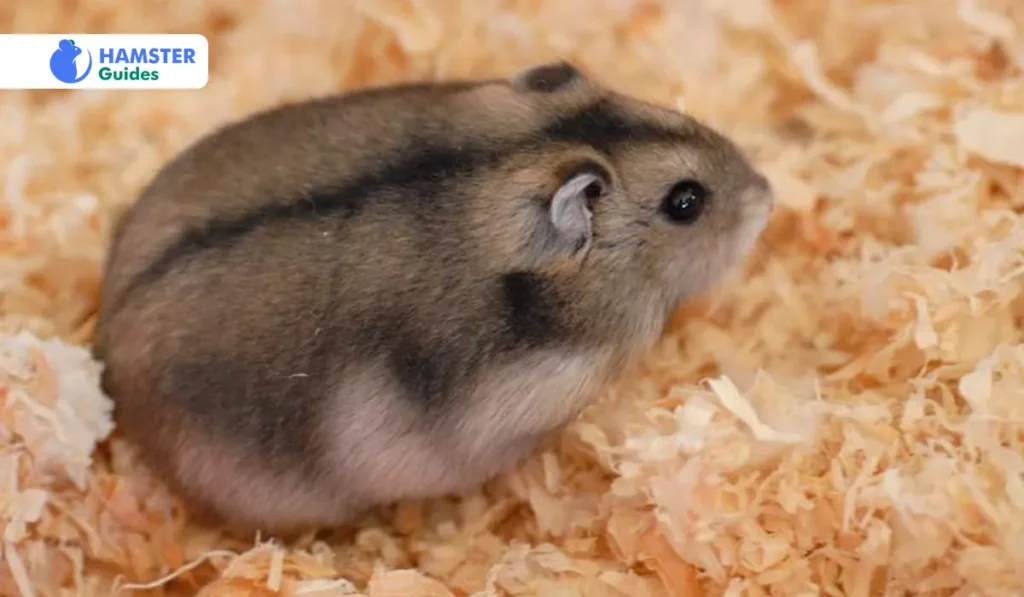
In addition to their regular pellet meal, your Campbell’s dwarf hamster needs a balanced diet with lots of fresh fruits and vegetables to guarantee a long and healthy life. These energetic animals also need exercise, so give them many chances to run and play outside their cage.
Read More: The Ultimate Guide to Campbell’s Dwarf Hamsters
The ideal temperature range for Campbell’s dwarf hamsters is between 65 and 75 degrees Fahrenheit, requiring a lot of bedding material to burrow. Frequent veterinary examinations will also guarantee that any possible health problems are identified early on.
Robo Hamster Lifespan
Roborovski is small despite being the most minor kind of dwarf hamster. Hamsters have comparatively lengthy lives compared to other hamster species. In captivity, they usually live for three to five years if given the proper care. They are distinguished by their small size and vibrant, curious personality.
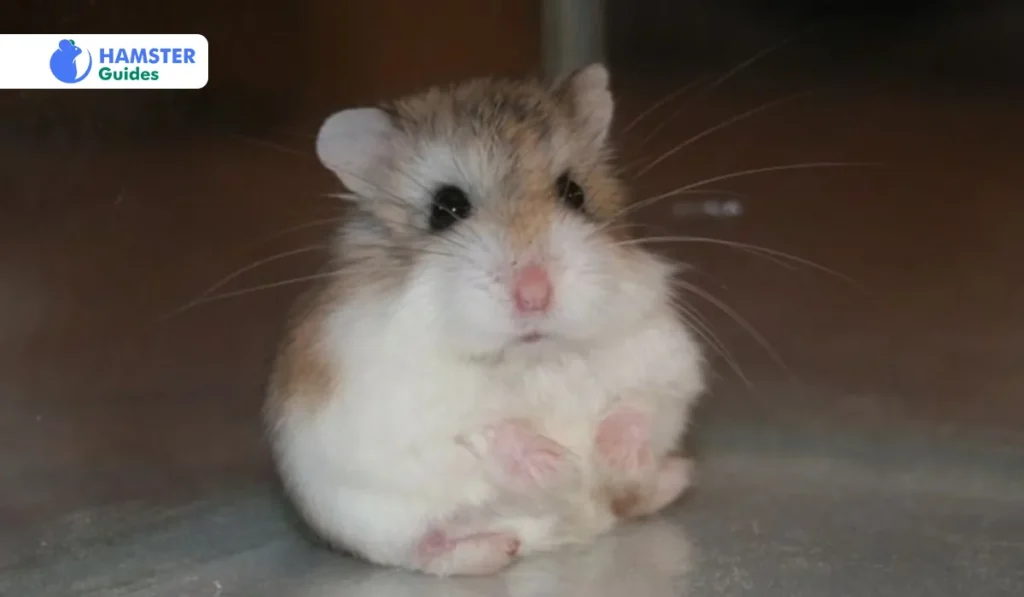
For your hamster to remain healthy and happy, you must provide them with many opportunities for exercise, stimulation, and a balanced diet. This can involve giving them playthings like toys and tunnels, putting up a ball or exercise wheel, or even allowing them to venture away from their cage with careful supervision.
Ultimately, it is critical to keep your Roborovski Dwarf hamster in a cozy living space. This entails maintaining the cleanliness of their cage and ensuring they always have access to clean water. Frequent veterinary treatment can also help identify possible health problems before they worsen.
Additional Information: Regular veterinary exams are required to detect health issues early on. Monitor your hamster’s behavior carefully and act promptly to address any issues to ensure a long and healthy life.
Golden Dwarf Hamster Lifespan
Syrian dwarf hamsters are also called golden hamsters. The golden hamster’s lifespan is two to three years; however, they can live for four years or longer with the proper care and attention. These charming animals are well-known for their amiable personalities and make excellent companions.
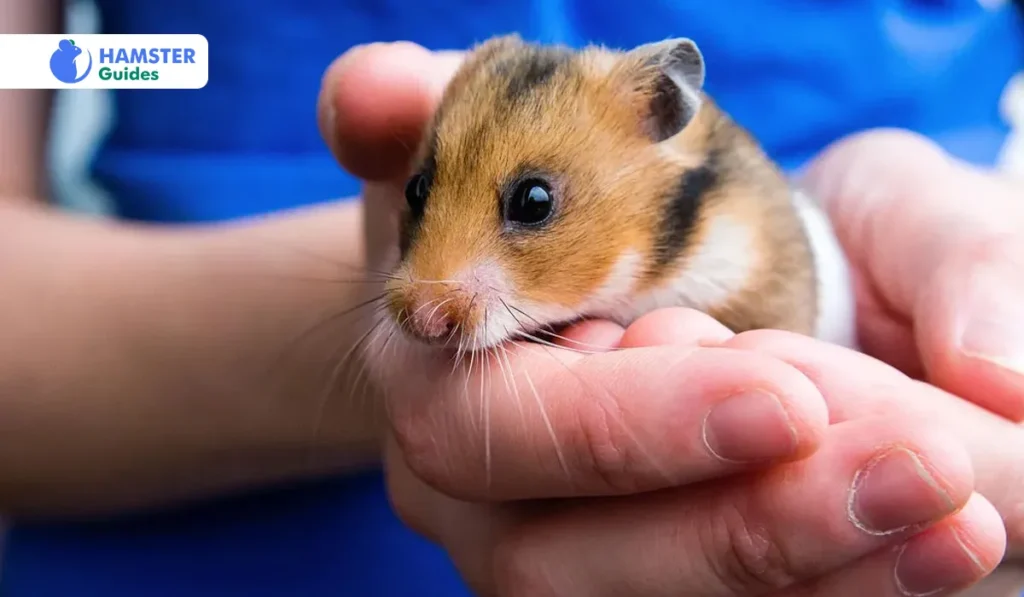
Genetics is a significant aspect that can affect the lifetime of Syrian dwarf hamsters. Some people may have a weakened immune system or be more susceptible to specific medical diseases than others. Selecting a healthy Syrian dwarf hamster from a reliable breeder or pet shop is crucial.
Read More: Golden Hamster or Syrian Hamster: Everything You Need To Know
The Syrian dwarf hamster’s lifespan is significantly influenced by nutrition, diet, and genetics. A well-rounded diet that includes fresh produce, high-quality commercial food pellets, and sporadic protein sources. Frequent veterinary examinations help identify possible health concerns before they become more significant.
Variables That Affect The Life Cycle Of A Hamster
Various variables can impact a dwarf hamster’s lifespan. Even though these tiny companions are noted for having shorter lifespans than other animals, there are things you can do to ensure they have a long and healthy existence. When selecting a pet, it is crucial to research because certain breeds may be more prone to particular health problems than others.
Here, we will see the factors that affect the dwarf hamster’s lifespan.
- Genetics and Breeding: A hamster’s genetic background is a fundamental factor. Hamsters from responsible breeders who avoid inbreeding are more likely to have robust long-term health .
- Diet and Nutrition: A balanced diet is foundational to preventing disease and promoting longevity.
- Core Diet: The majority (about 90%) of their diet should be high-quality hamster lab blocks or pelleted food to ensure balanced nutrition .
- Fresh Foods: Offer small amounts of fresh vegetables like broccoli, cucumber, and bell peppers. Fruits should be given sparingly as treats due to their high sugar content .
- Foods to Avoid: Never feed your hamster chocolate, caffeine, alcohol, garlic, onions, or citrus fruits, as these are toxic .
- Habitat and Environment: A proper setup reduces stress and prevents illness.
- Cage Size: Provide a well-ventilated habitat measuring at least 24″ L x 12″ W x 12″ H for a single hamster, with larger being better .
- Bedding: Use 2+ inches of paper-based or aspen shavings for burrowing. Avoid cedar and pine beddings, as their aromatic oils can cause respiratory irritation .
- Enrichment: An appropriately-sized, solid-surface exercise wheel is non-negotiable for their physical and mental health. Also provide hideouts, chew toys, and tunnels .
- Healthcare and Veterinary Checkups: Hamsters are prey animals and hide signs of illness, so proactive care is vital. Be aware of the most common health issues identified in veterinary practice, such as “wet tail” (diarrhea), bite injuries from other hamsters, overgrown nails, and overgrown incisors . Contact a veterinarian if you notice weight loss, lethargy, wheezing, or a wet/stained bottom.
Hereditary
A factor that may affect a dwarf hamster’s longevity is genetics. Although certain species—like roborovski dwarf hamsters—tend to live longer than otters, a hamster’s longevity can also be influenced by its genetic makeup.
Genetic mutations and inbreeding can shorten lifespans and raise the likelihood of health problems. Choosing a healthy stock and doing your homework on breeders is crucial when choosing your pet. Appropriate breeding methods in wild populations can also avoid adverse effects on population health overall and protect genetic variety.
Read More: Do Hamsters Eat Their Babies?
Even though you have a little control over your hamster’s genetic makeup, you can extend their potential life span by giving them the right food, exercise, and medical attention. Frequent examinations by a veterinarian with experience with small animals can detect any health problems early on and prevent them from developing into more significant disorders.
Top Tip: Your dwarf hamster’s environment may affect its lifespan as a pet. Maintain the cage well-ventilated, keep it out of the cold and draft, and provide a comfortable living space that includes opportunities for exercise, an appropriate substrate, and hiding places.
Fresh Water
Ensuring your pet has access to clean water is also very important. Because of their elevated metabolic levels, hamsters may not drink much at once. Still, they require water access frequently, so ensure the water container is always filled with clean, fresh water with no dangerous chemicals.
Read More: How Long Can Hamsters Go Without Water?
Exercise And Stimulation
Being energetic animals, dwarf hamsters need a lot of activity and mental and physical stimulation to stay healthy. Lack of exercise can result in gaining weight, which can then cause diabetes and heart issues, among other health hazards. Ensure that your dwarf hamster has a lot of room to go about in its cage so it may get enough exercise and stimulation.
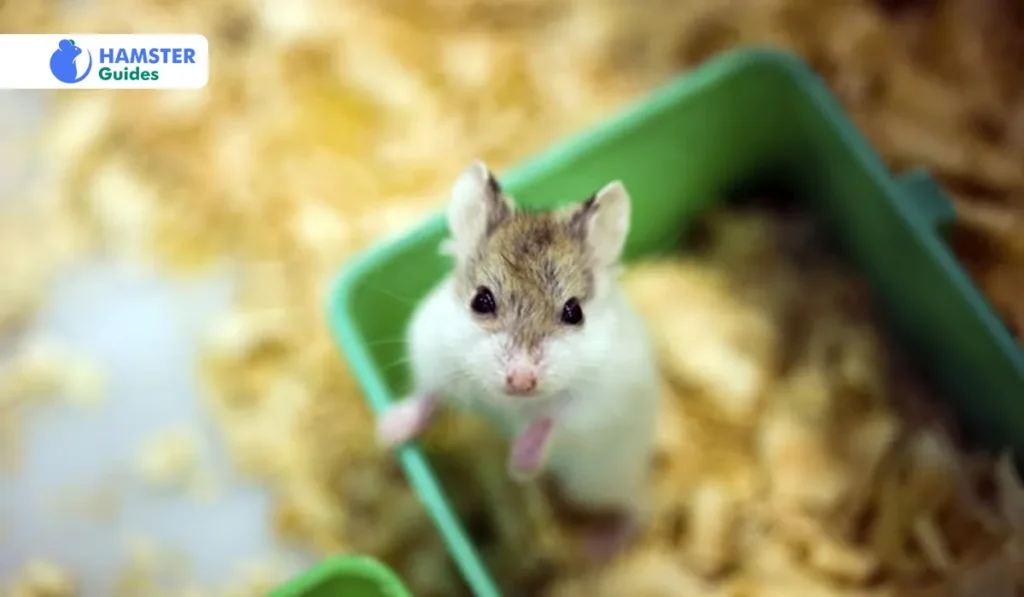
Remember that dwarf hamsters are gregarious creatures. It is essential to their welfare to give them chances to socialize with other hamsters or even people. This might be as simple as routinely spending time with your pet or organizing playtime with pet owners.
Environment
Your dwarf hamster’s longevity may be significantly impacted by the conditions in which it lives. Due to their sensitivity to changes in humidity and temperature, dwarf hamsters require a pleasant living environment. Keep the cage away from heating or cooling vents and direct sunlight. Furthermore, confirm that your hamster can easily move around in the cage.
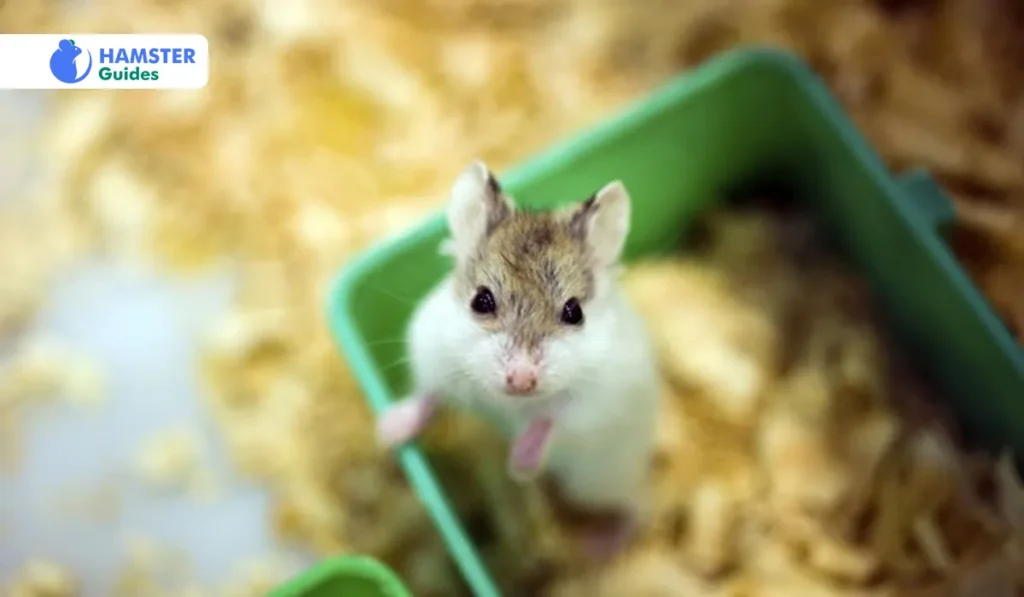
Living in a small or congested space can stress your pet and may be linked to health problems. Consider using a floor like Aspen shavings to give your dwarf hamster a secure and cozy home. Give kids many items, hiding spots, and exercise opportunities to play with.
Read More: Do Hamsters Live in The Wild?
Remember that stress can also shorten your dwarf hamster’s lifespan, so try to keep loud noises and abrupt movements inside their cage to a minimum. It is within your power to guarantee that your pet has a long and happy life by your side by providing the proper care and consideration for environmental elements.
Top Tip: A respiratory illness in hamsters can be caused by drafts, bedding material, and abrupt shifts in temperature that stimulate the respiratory system.
A Well-Balanced Diet
A dwarf hamster’s lifespan is significantly influenced by its nutrition. These cute pets can live much longer if they eat a nutritious, balanced diet. Due to their omnivorous nature, dwarf hamsters need plant- and animal-based diets to suit their nutritional needs.
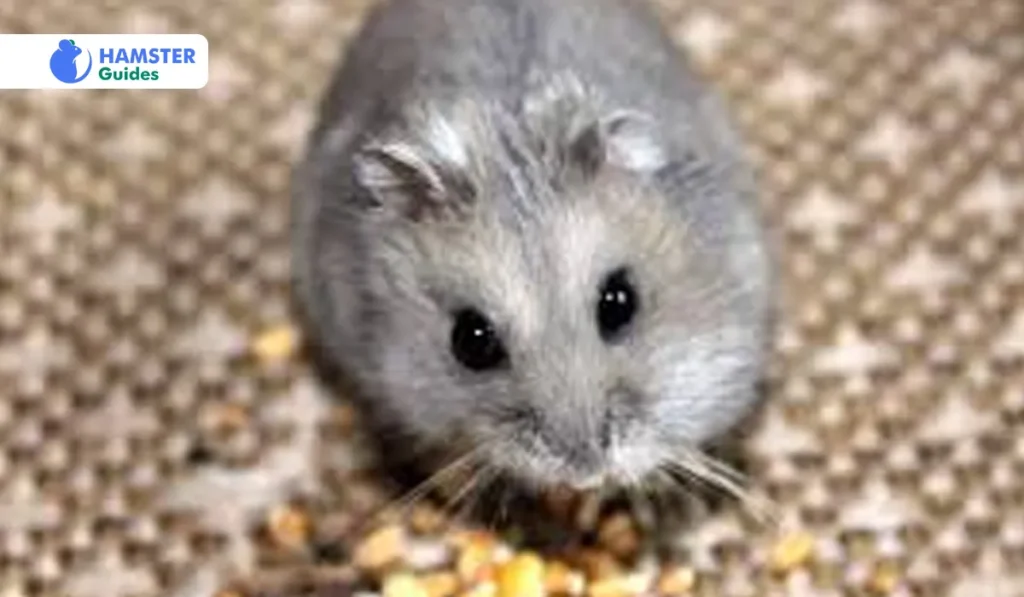
Selecting premium dwarf hamster food with vital nutrients is crucial for feeding your dwarf hamster. Dwarf hamster-specific pellets or blocks are a fantastic choice since they have the right amount of protein, fat, fiber, vitamins, and minerals.
Read More: Can Hamsters Eat Roasted Peanuts?
Moreover, citrus and onion-based goods should be avoided as they are unsafe. Sporadic rewards are also advised, like mealworms or little bits of cooked meat. Balance is essential, as overindulging in food can lead to obesity and other health hazards.
Dwarf Hamster Health Issues
Hamsters are tiny, so any diseases or injuries can quickly become severe. A disease or injury can be treated promptly before it becomes potentially fatal. Knowing the most typical disease symptoms will help you cure the issue immediately.
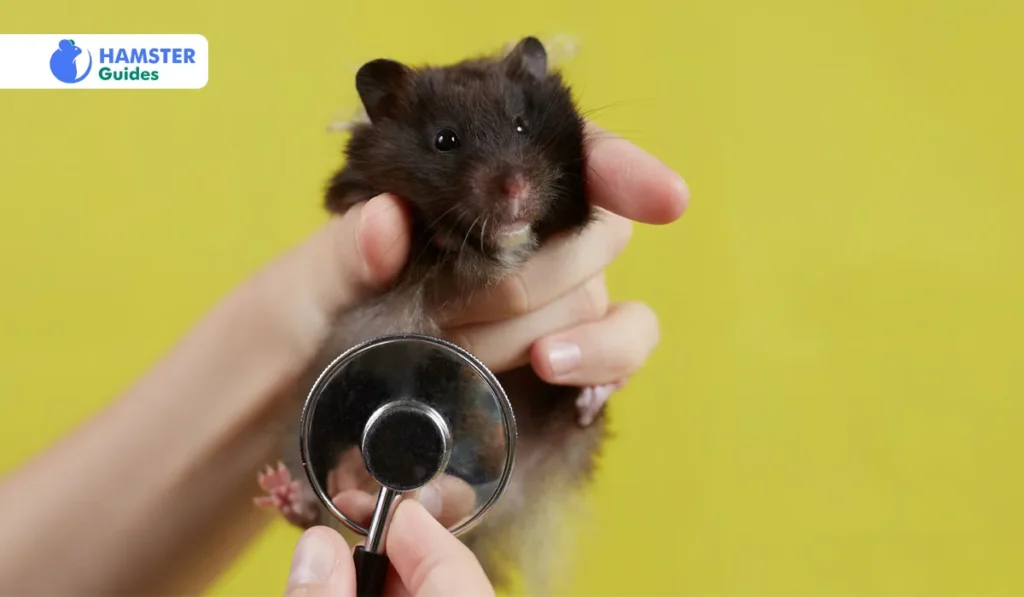
Diarrhea
Various illnesses, such as parasites in the intestinal tract, wet tails, antibiotic therapy, and dietary modifications, can cause diarrhea. Overfeeding veggies or any other fresh fruit is a prevalent trigger of diarrhea. Ensure that your furry companion continues drinking water if they have diarrhea because dehydration is a serious risk.
Hamsters With Wet Tail
Wet tail, also known as proliferative ileitis, is a highly contagious condition primarily affecting hamsters who have just been weaned. With symptoms including diarrhea, tiredness, and a lack of food intake, susceptible hamsters may pass away quickly.
Read More: How To Take Care Of A Hamster?
Should your hamster exhibit any of these signs, it is advisable to consult a veterinarian. You should seek veterinarian attention if diarrhea is accompanied by lethargy or inadequate water consumption.
Infectious Respiratory Conditions In Hamsters
Pneumonia in your cute furry hammy can result from respiratory illness. Respiratory infection symptoms include drainage from the eyes and nose, sneezing, and labored breathing. Immediately seek veterinarian care if you observe any decline in movement, difficulty in breathing, or a lack of eating.
Abscesses In Hamsters
Pockets of infection, known as abscesses, can develop from small skin breaches. Pus builds up beneath the skin and can occasionally form a large lump that drains on its own.
A hamster may have an abscess if it consistently appears to have food packed in its cheeks. Veterinarian care is necessary for dripping, cleaning, and treating antibiotics for abscesses.
Additional Information: Handling hamsters during the first few weeks of their lives is not advised. The pups’ mother will probably kill and consume them if you touch them before they grow fur and are free to roam the enclosure.
Advice For Giving Them A Healthy Captive Life
By giving your dwarf hamsters the proper care, you can ensure they live long and healthy lives. Here are some tips to keep in mind.
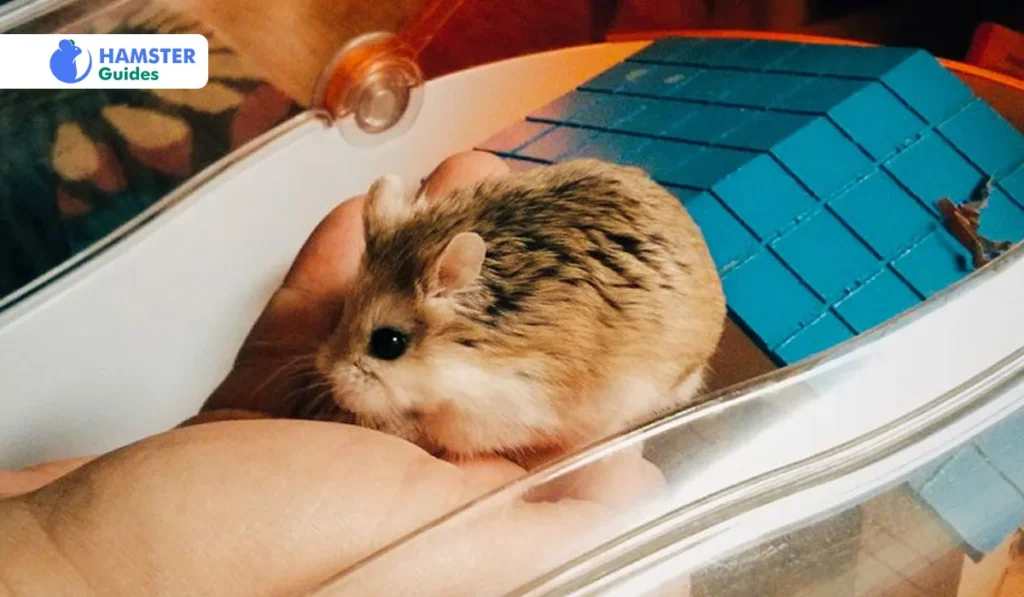
How to Extend Your Dwarf Hamster’s Lifespan
- Prioritize a Balanced Diet: Stick primarily to fortified pellets and offer fresh foods in moderation to avoid obesity and diabetes, which are common in dwarf species .
- Maintain a Clean Habitat: Spot-clean soiled bedding daily and perform a thorough cage cleaning with a pet-safe disinfectant weekly to prevent bacterial growth .
- Provide Mental Stimulation: Regularly rotate safe toys and provide opportunities for foraging to prevent boredom and stress.
- Handle with Care and Consistency: Build trust through gentle handling over a soft surface. Allow new hamsters a few days to adjust to their new home before beginning handling sessions
The Final Words
In the captivating realm of dwarf hamsters, after learning about them, it’s essential to care for your cute rodents’ health. Each hamster species has its qualities; however, the care of all other species remains the same. All variables, like a well-balanced diet, physical and mental health, exercise, veterinary care, and environment, influence the dwarf hamster’s longevity.









Leave a Reply